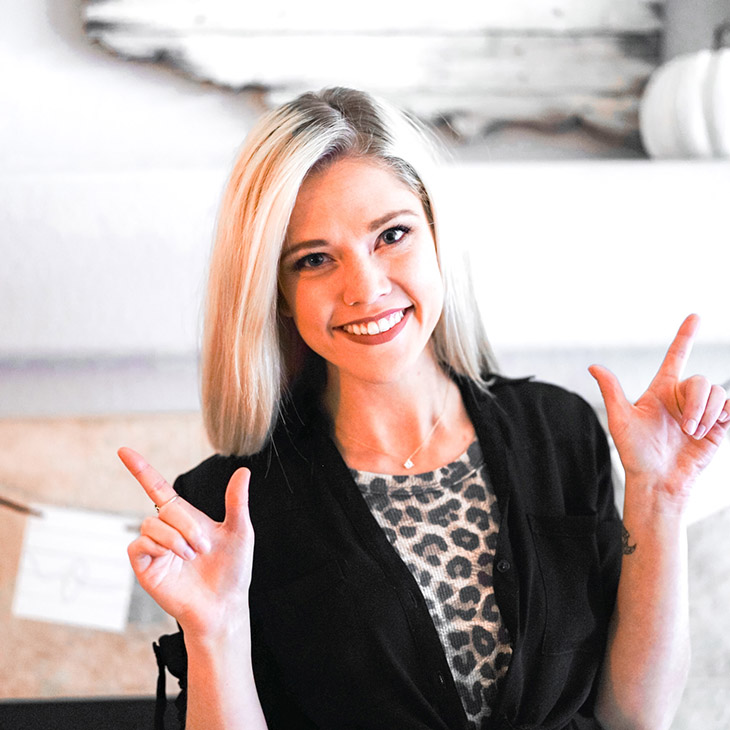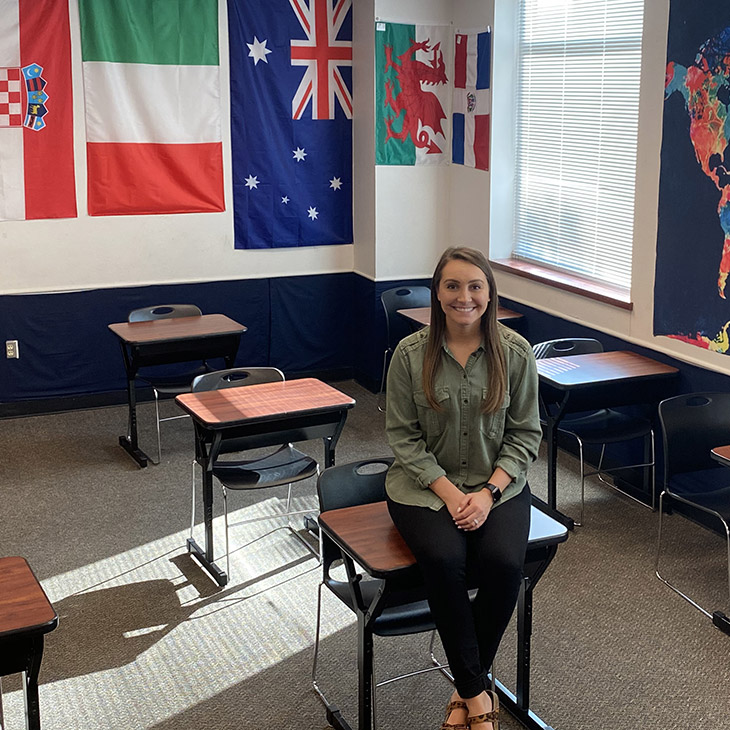
Teachers and parents adjust to new practices for education
Thursday, December 17, 2020
Kids never forget the excitement of the first day of school, planning their outfits and packing their lunches. This year, however, many children across the country rolled out of bed and started their day in their pajamas at desks in their homes.
Teachers have had to adjust lesson plans, learn new methods and embrace technologies they may not have previously used to help ensure their students are receiving the best education possible during the COVID-19 pandemic.
Schools across the country have handled the pandemic in different ways, with most opting for one of three options — completely virtual instruction, in-person but socially distanced classes or a hybrid model that uses both methods. These changes have made an impact on the day-today lives of students, parents and teachers.
Teaching Methods
Kathryn Burnett, a 2017 OSU elementary education graduate, is a seventh-grade English teacher at Mesa Middle School in Castle Rock, Colorado. Her classes went virtual at the end of the 2019-20 school year, and her district adopted a hybrid approach for 2020-21.

“I only see my kids in person twice a week,” Burnett said. “The other three days are online. The kids are only all together on Fridays when we meet virtually. I am still required to be at the school four to five times a week.”
Another teacher adapting to the changes is Emily Mainord, who graduated from OSU in a degree in secondary social studies education in 2015 and a master’s degree in educational technology in 2017.
Mainord is currently an AP human geography teacher at Wakeland High School in Frisco, Texas. Her school district started the 2020-21 school year virtually but has since allowed parents to decide if their children will attend in-person classes or participate in a virtual environment.
“I currently only have face-to-face sessions, which is really nice,” Mainord said. “There are a ton of rules and protocols in place to ensure that our students are safe.”
Some of these rules include new classroom setups, additional lunch periods to minimize the number of students eating at one time and staggered dismissal times to ensure fewer students in hallways and common areas.
Other districts are adjusting to completely virtual instruction. Westwood Elementary in Stillwater adopted this method after the city’s COVID-19 case count began to rise in September. Taylor Whitney, a 2013 elementary education graduate, is a fourth-grade teacher at Westwood. The adjustment to virtual classes was difficult when the school district chose to finish the 2019- 20 school year online. Since then, great strides have been taken by teachers and administrators to ensure the students are receiving the best instruction possible.
“We came in over the summer and were provided a lot of technologies and resources on how to make things more engaging for our kids online,” Whitney said. “After we made the transition back to virtual a few weeks into the school year, we worked together as teachers to create assignments for our kids.”
Impact on Students
These teachers understand the extra focus and effort it takes to engage with their classes. Student engagement is vital for all grade levels from kindergarten to high school. But the virtual world has made this much more difficult.
Burnett said she and her fellow teachers at Mesa Middle School in Colorado have started using a popular social media technology to better engage with their students.
“A lot of our teachers, including myself, have started to do short TikTok videos,” Burnett said. “If we can get them to show their thinking or what they know through a fun TikTok or a little dance, then we are all for it.”

Another great way to ensure students are engaged in class is by facilitating a strong working relationship with fellow students. Mainord noticed she needed to adjust her approach after she had to change the physical setup of her classroom. In the past, she would have students sit at tables of four or five. Each student now has their own individual desk spaced six feet apart for social distancing.
“I feel like I have had to build more of a full classroom culture,” Mainord said. “All of my kids have to be comfortable with each other instead of just within their table group. Not that it wasn’t a holistic approach before, but we now have discussions the whole class hears, and they have to be comfortable with that.”
Westwood Elementary and Whitney have also focused on forming bonds between students and an extra emphasis on interaction between students and teachers.
“We meet virtually in small groups every Monday and Friday,” Whitney said. “This allows us to have more interaction with our students. We are really focusing on one subject each day.”
The choice to focus on one subject at a time has allowed Westwood teachers to create videos that increase instruction with their students. These prerecorded lessons are similar to one-on-one instruction and have played an important role in the development of Whitney’s fourth-grade students.
Parental Contributions
In addition to the impact the pandemic has had on students and teachers, the lives of parents have also changed because of the new teaching methods. In many areas, parents have added “homeschool teacher” to their daily duties.
Teachers can truly appreciate the important role parents are playing this year. The support they receive from the parents makes a huge impact on how successful the lessons are.
“The parents in my homeroom class have been amazing,” Whitney said. “Everyone at Westwood has been really great at working with us to help teach their students. We showed them how to use Google Classroom, and they have really run with it.”
Kristine Waits, a 2000 OSU business administration graduate, currently has a student in Whitney’s fourth-grade class. She is guiding her three children through the virtual school year.
“The first two weeks were incredibly difficult,” Waits said. “I’m fairly certain I walked a marathon within my home sprinting between kids to answer their questions or address computer issues.”
After the first few weeks, Waits and her kids settled more into a routine and have had an overall positive experience with the virtual lessons. She said she understands the teachers are still learning the process themselves.
“I can’t imagine how tough the initial dive into virtual teaching was for the teachers,” Waits said. “Asking them to educate in both traditional and virtual styles is like asking someone to juggle and walk a tightrope at the same time — it can be done but not without a lot of practice. Mrs. Whitney is incredibly organized, and her teaching style has made it so much easier on us.”
While the initial experience may have been difficult, Waits said she has been able to look at the bright side and has made many positive memories during this unique time.
“This time with my kids, while sometimes frustrating, is precious,” Waits said. “I have also learned a lot about them and the way they operate.”
Stacy Walker, a 2002 OSU marketing and human resource management graduate, has had a similar experience with her student in Whitney’s class. Much like Waits, Walker is also balancing the stress of having three children at home in virtual classes.
“It has been a struggle to manage three kids at three different schools, each with different expectations,” Walker said. “It can be hard to balance everything, and it is so tiring — emotionally, mentally and physically for all of us.”
Although getting settled into a routine has been difficult for Walker and her kids, she has also learned a lot about her kids she might not have if they were in a traditional classroom this year.
“Our family has experienced more time together and shared moments that would never have happened otherwise,” Walker said. “I am more aware of their educational needs and abilities than during a typical year.”
OSU Resources
Throughout the pandemic, the OSU College of Education and Human Sciences has created resources to help teachers and parents adapt to virtual learning, including tips from OSU professors, guides for educational technology, fun arts and crafts ideas and more. Check okla.st/eduresources for more information and to take advantage of everything the OSU education community has to offer.
